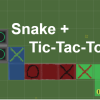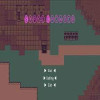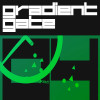Kakuro
About Kakuro
Kakuro, also known as "Cross Sums" or "Kakro" in some regions, is a fascinating and challenging number puzzle game that combines elements of Sudoku and crossword puzzles. Developed in Japan, Kakuro has gained popularity worldwide for its unique blend of mathematical logic, deduction, and problem-solving.
The Rules:
Kakuro is played on a grid, which consists of interlocking cells that are organized into rows and columns. The objective is to fill in each cell with a number from 1 to 9, following a few simple rules:
- No number can be repeated within the same row or column, just like in Sudoku.
- The sum of the numbers in each "cage" (group of adjacent cells with a clue) must equal the given clue for that cage. For example, if a cage contains three cells and has a clue of 6, you must fill in those cells with numbers that add up to 6, without repeating any numbers.
The Challenge:
Kakuro puzzles come in varying degrees of difficulty, from easy to fiendishly challenging. The real test lies in your ability to apply deductive reasoning and basic arithmetic to fill in the grid accurately. The game provides no guessing or luck-based elements; every move is determined by logical deduction.
Strategy:
To excel at Kakuro, you need a strategic approach:
Start with the Cages: Begin by focusing on the cages with the highest and/or smallest clue numbers. For example, if you have a cage with a 3 as the clue, you know that the only possible combinations are 1+2 or 2+1.
Use Pencil Marks: To keep track of possible values for each cell, use pencil marks to make notes in the empty cells. This helps you eliminate possibilities and see where a number can fit.
Look for Dependencies: When you fill in a cell in one cage, it may affect the possibilities in neighboring cages. Always be on the lookout for dependencies and implications of your moves.
Solve for Unique Values: Sometimes, a cell has only one possible value left due to the constraints of the row, column, and neighboring cages. Identify and fill in such cells.
Iterate and Reevaluate: Kakuro puzzles often require going back and forth, making progress in one area while considering the consequences for the entire grid.
Benefits of Playing Kakuro:
Kakuro is more than just an entertaining pastime; it offers several cognitive benefits:
Mental Stimulation: Kakuro stimulates your brain by challenging your logical and numerical reasoning.
Improved Math Skills: Playing Kakuro can enhance your arithmetic skills, as you constantly perform calculations in your head.
Enhanced Problem-Solving Abilities: The puzzles encourage creative problem-solving and strategy development.
Patience and Perseverance: Kakuro teaches patience and persistence, as some puzzles can take a while to solve.
Stress Relief: Solving Kakuro puzzles can be a calming and meditative experience, helping reduce stress and anxiety.
In conclusion, Kakuro is a captivating numbers and logic puzzle game that offers a rewarding mental workout. It's a game that appeals to people of all ages and skill levels, from casual players to dedicated enthusiasts. So, if you enjoy a good mathematical challenge, grab a Kakuro puzzle book or find an online version to start honing your number-crunching skills while having fun.
How to play Kakuro
Using Mouse



































































